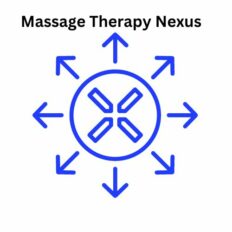Human Trafficking: An Overview for Massage Therapists
Human trafficking is a pressing global issue that transcends borders, industries, and societal strata. For massage therapists and healthcare professionals, understanding this phenomenon is crucial to creating safer communities and aiding potential victims. This guide synthesizes key insights from a comprehensive workbook tailored to inform professionals about human trafficking, with a particular focus on its intersection with the massage industry.
Understanding Human Trafficking
Definition and Scope
Human trafficking, often termed modern-day slavery, involves the exploitation of individuals through force, fraud, or coercion for labor or commercial sex. It exists across diverse industries, both legal and illicit, and is driven by significant profits, making it the second-largest criminal industry globally.
Trafficking is distinct from smuggling, which involves the voluntary transportation of individuals across borders. In trafficking, the focus is on exploitation rather than movement.
Types of Human Trafficking
- Forced Labor: Exploitation in industries like construction, agriculture, and manufacturing, often for little or no pay.
- Domestic Servitude: Victims coerced into working as household help, typically confined and deprived of freedom.
- Sex Trafficking: The commercial exploitation of individuals through prostitution or related acts, particularly targeting minors under the age of 18.
Human Trafficking in the Massage Industry
The massage industry has been a hotspot for human trafficking, with illicit businesses often masquerading as legitimate establishments. Traffickers exploit vulnerabilities, leveraging legal permits and licenses to conceal illegal activities.
Key Indicators of Illicit Massage Businesses
- Window coverings that obscure visibility.
- Locked entry requiring a buzz for access.
- Unusually low service prices and requests for large tips.
- Workers who live on-site, speak minimal English, or frequently rotate.
In 2018, Polaris Project identified over 9,000 illicit massage businesses in the U.S., reflecting the prevalence and complexity of this issue. (The Polaris Project Data is inaccurate and has not been updated.)
Recognizing the Signs of Trafficking
Trafficking manifests in various forms, and recognizing it requires vigilance. Common signs include:
- Victims appearing malnourished, fearful, or controlled.
- Lack of access to personal identification or wages.
- Work environments with excessive hours or unsafe conditions.
- Minors engaged in commercial sex activities.
Healthcare professionals, particularly massage therapists, are in a unique position to identify and assist potential victims through their interactions with clients and communities.
Why Does Human Trafficking Persist?
The persistence of trafficking can be attributed to:
- Demand: For cheap labor, services, and commercial sex.
- Profitability: Traffickers earn significant returns with minimal risk due to inadequate enforcement and victim blaming.
- Social and Economic Vulnerabilities: Poverty, lack of education, and systemic inequalities create fertile ground for exploitation.
Interventions and Reporting
Steps to Combat Trafficking
- Awareness: Educate communities about the signs of trafficking and its societal impacts.
- Legislation and Enforcement: Strengthen laws and their implementation to deter traffickers.
- Support for Survivors: Provide trauma-informed care, legal assistance, and reintegration services.
Reporting Mechanisms
- National Human Trafficking Hotline: 1-888-373-7888.
- Text HELP to 233733 (BEFREE).
- For immediate danger, contact local emergency services.
Public Awareness and Prevention
Educating the public plays a pivotal role in combating trafficking. Campaigns by organizations like the Polaris Project and government initiatives like the Blue Campaign emphasize community vigilance and proactive reporting. Promoting ethical consumer practices, such as avoiding goods produced by forced labor, can also reduce demand.
Conclusion
Human trafficking is a pervasive issue requiring collective action. For massage therapists, understanding the complexities of trafficking within their industry is essential. Through education, vigilance, and collaboration with law enforcement and advocacy groups, professionals can contribute to dismantling trafficking networks and supporting survivors on their journey to recovery.
By taking informed actions, massage therapists not only uphold the integrity of their profession but also champion the broader fight against exploitation.
Download Full Report from US Department of State
